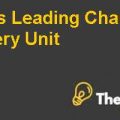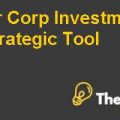Siemens Electric Motor Works (B): Pricing Interdivisional Sales Case Study Analysis
Introduction
Siemens AG, a global behemoth in the realm of electrical and electronics products, comprises various divisions with one of the most renowned being the Energy Automation group. The Electric Motor Works (EMW), a key manufacturing division, specializes in the production of low-voltage motors. In the 1970s, when EMW was confronted with a significant challenge following the shift in the market dynamics, it decided to reposition its product mix.
The bold move entailed an increased focus on custom motors, pushing the production of standard motors to only 10% while spiking custom motors to 90%. This call for change necessitated the replacement of conventional machines with more sophisticated ones allowing the company to gain a competitive edge in the industry by providing personalized services with enhanced efficiency and precision. Ultimately, EMW sought to differentiate itself by leveraging customized solutions and specialized manufacturing technology, and thus succeed in a highly competitive market.
Problem Statement
Siemens Electric Motor Works (B) faces the challenge of determining a fair and acceptable transfer price for motors sold to the Large Drives Division (LDD) within Siemens. The company must balance internal cost considerations with external market conditions to establish a transfer price that ensures profitability for both divisions while encouraging efficient resource allocation.
Key Problems
Determining the Transfer Price
Siemens Electric Motor Works (EMW) revolves around the pricing of products transferred between its manufacturing and sales divisions. EMW functions as a profit center within Siemens AG, producing low-voltage motors. Calculating an appropriate transfer price to maximize profits while considering cost allocation, overheads, and customer profitability is the challenge.
Incentivizing Optimal Resource Allocation
The current transfer pricing system in place at EMW elicits some concerns about the behavior it encourages, such as the incentives of each manager to increase divisional profits. Based on factory cost, variable cost, profit, and contribution margin, transfer pricing rules may not accurately measure the true profitability of EMW. This leads to a lack of transparency in calculating the potential profit of EMW, as part of it goes to the sales division.
Balancing Internal and External Market Conditions
Moreover, the decision to set up both a Sales and an EMW division as profit centers within Siemens spark debates on the appropriateness of this arrangement. There are both positives and negatives when it comes to running separate profit centers, such as cost allocation, administrative costs, decision-making autonomy, and not least, profit transparency.
Situational Analysis
Organizational Structure
The structural building of Siemens Electric Motor Works (EMW) encompasses a range of roles, responsibilities, and relationships. These form a complex framework, essential for making decisions, carrying out performance evaluations, and the distribution of profits. As part of the larger conglomerate Siemens AG, EMW is part of the Energy Automation group and set up as a profit center alongside its sales division. Let's examine the key aspects of the organizational structure:
Profit Centers
A profit center is an organizational unit that is tasked with the responsibility of revenue generation and the management of costs. To maximize the efficiency and benefit of decentralized decision-making, performance evaluation, and accountability, both EMW and the sales division are established as profit centers.
Performance is evaluated based on the amount of profits generated and the assistance it provides to the organization's overall financial performance. Substantial profits are expected to be accrued upon the efficient operation of these profit centers.
Autonomy and Decision-Making
Establishing EMW and the sales division as separate profit centers grants them control and flexibility in their decision-making processes. Managers of profit centers can set strategic goals and make decisions that align with current market trends and objectives.
By having this independence, companies can become more agile and responsive to changes in the environment, ensuring that decisions taken are beneficial to each particular unit. With the increasing complexity and variability of the business world, this sort of autonomy can prove to be invaluable.
Performance Evaluation and Incentives
The performance of EMW and the sales division, as profit centers, is judged using financial metrics such as revenue, expense, profit, and ROI. This evaluation provides a basis for the award of bonuses, incentives, and rewards for personnel within the profit centers. The profit center structure ensures a strong connection is forged between the rewards and the performance of the groups, potentially driving individuals to strive for better financial results...........
Siemens Electric Motor Works (B) Pricing Interdivisional Sales Case Study Analysis
This is just a sample partial case solution. Please place the order on the website to order your own originally done case solution.












